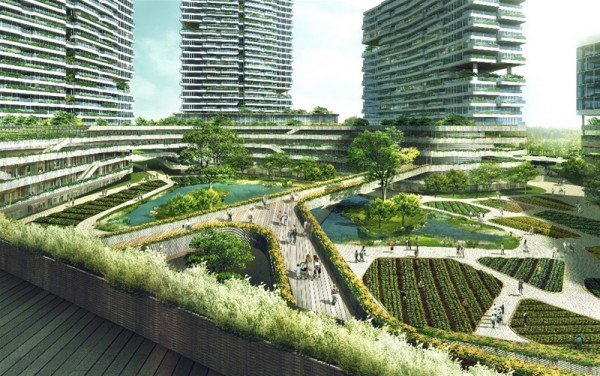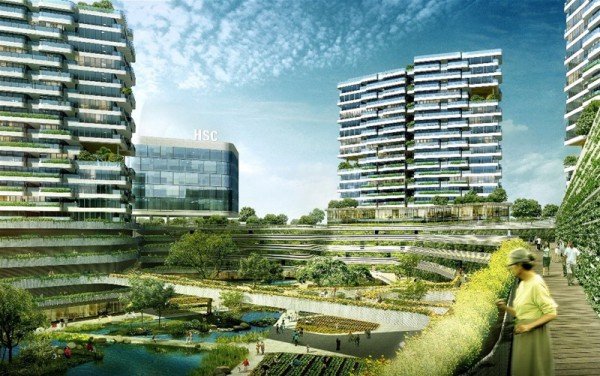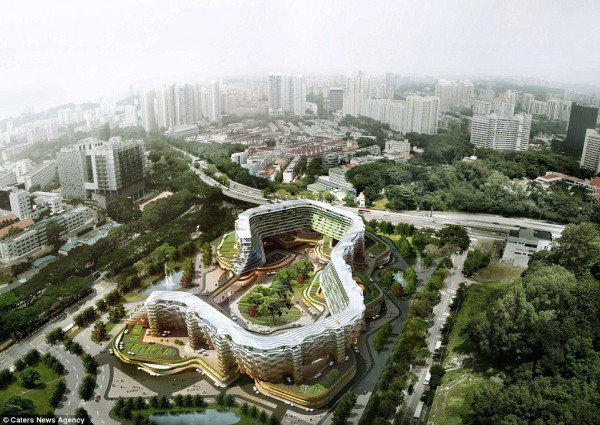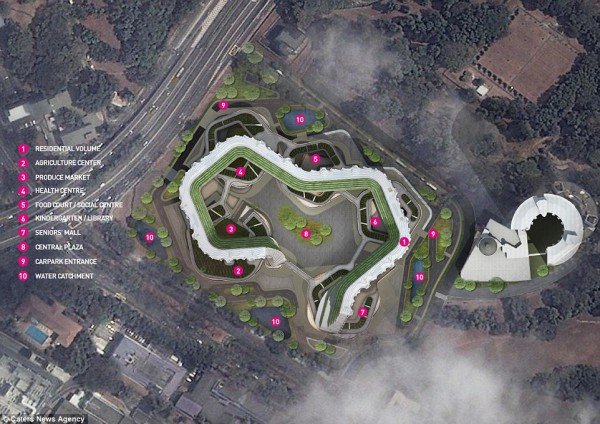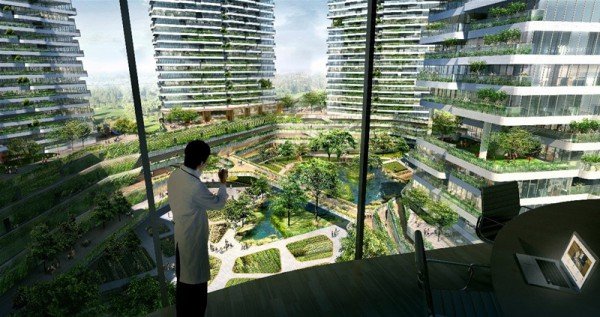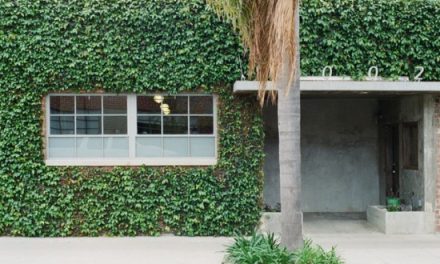Combining retirement homes with vertical urban farming
A few decades ago, if you mentioned the words ‘retirement home‘ in the same sentence as ‘vertical farm‘, chances are you’d get a few weird looks. These days, anything is possible (a Bentley SUV, anyone?), and even if it isn’t, you can be sure that somebody out there is probably already working on making it become a reality.
So when the ‘HomeFarm‘ project was announced, it actually got some pretty good response, judging from all the coverage it got from various media outlets, including the Daily Mail UK, popular design and architecture website Inhabitat and gardening technology magazine Garden Culture. It even won the Future-Experimental Project award at World Architecture Festival 2015, which is a pretty big deal in the architecture industry.
The concept of the Home Farm is quite simple and straightforward. It’s basically a residential development for senior citizens that combines vertical farming, aquaponics, and organic gardening. This way, the residents can keep healthy and active with gardening activities, not to mention well-stocked with fresh, organically grown veggies and fruits. Such activities can help the older generation retain an active community involvement that prevents dementia and promotes self-esteem. Sounds like an awesome idea, doesn’t it?
Designed by SPARK Architects and developed for Healthcare Provider HSC Healthcare Group, the fiirst HomeFarm project will be located on a 6.5-hectare site in Cyberjaya, Malaysia. It aims to set a new precedent on green architecture and buildings in Malaysia, using technology like an integrated air-cleaning algae bio-fuel system, a curvilinear building that wraps around a central courtyard to keep it shaded and pollution-free, an irrigation system that uses harvested rainwater and treated gray water, on-site biomass plant, among others. The project is expected to take off by 2018, with plans to expand more similar projects to Singapore and other Asian cities.
The project aims to solve two different issues affecting the urban class in South East Asia, one social and the other economic. The first issue concerns a large part of the increasing urban population of elderly people (i.e. Japan) with no social security, while the second problem alludes to how most cities tend to import food rather than producing it themselves (i.e. Singapore), resulting in increased costs and higher cost of living. Theoretically, the HomeFarm solves both of the issues – by allowing old people to reside in a safe urban community, and using their contribution in growing localized food ranging from vegetables to fruits.
Of course, the residents won’t be forced to work on the farm. There will be residents who enjoy and are interested in farming, and there will also be residents who don’t; not everybody is expected to take up or enjoy farming, which is why there will be a professional team employed to run the productive garden as a viable business, according to SPARK director Stephen Pimbley.
That’s not all. Even though the HomeFarm is largely meant as a retirement home concept, there will be a variety of housing types, from one-bedroom studios to four-bedroom apartments to accommodate different needs and the cultural norm of multi-generational housing. The development will also comprise a medical centre, six residential towers, a central productive garden and farm, nursing home, retail, sports and recreational facilities for residents. The residential units will be integrated with “MediHome”, a cloud based electronic health-care technology which allows users to monitor their vital signs and keeps track of their health, similar to the ‘medihome’ technology used in Aragreens Residences.
In short, it’s a residential mixed-use complex combining agriculture activities and housing for senior citizens with shopping, recreation, employment, and health-care facilities on the grounds. If the project is successfully launched, it will definitely be something to look forward to in the future of green building and retirement living in Malaysia.
Other Sources
Hexapolis (link)
Spark Architects


